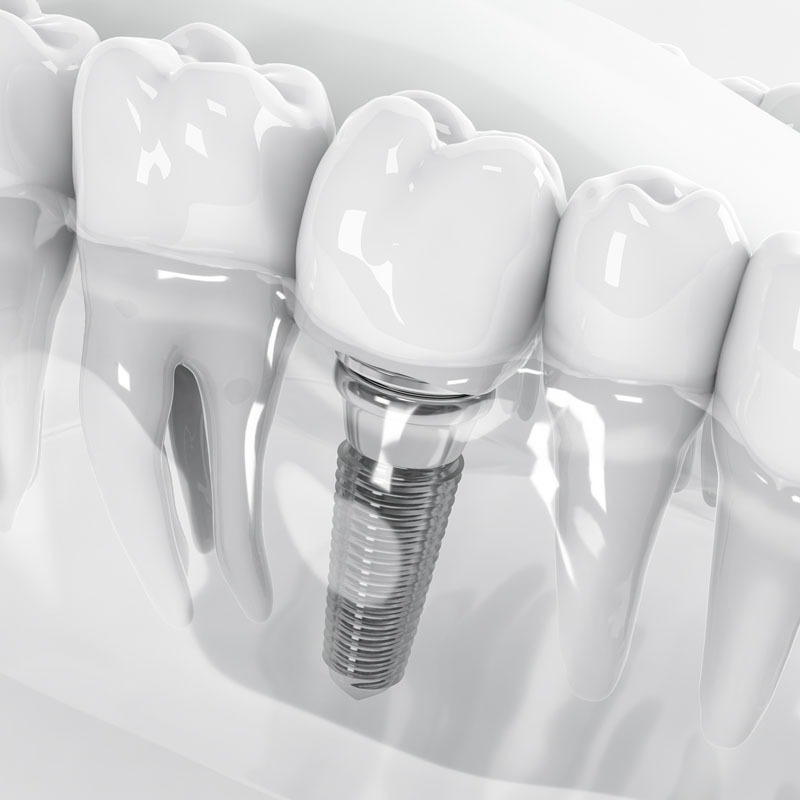First of all, there are different replacement alternatives for a missing tooth. When considering options for replacing a missing tooth, it’s essential to consult with your dentist to determine the most suitable option based on your individual needs, oral health, and aesthetic preferences. Your dentist can provide personalized recommendations and discuss the advantages and limitations of each treatment option to help you make an informed decision.
Dental Implant Solutions
Dental implants are considered the gold standard for replacing missing teeth because they closely mimic the look, feel, and function of natural teeth. A dental implant consists of a titanium post that is surgically placed into the jawbone, acting as a replacement for the tooth root. Once the implant has integrated with the bone, a custom-made dental crown is attached to the implant, providing a durable and long-lasting solution. Dental implants offer excellent stability and prevent bone loss in the jaw, but they require oral surgery and a longer treatment timeline compared to other options.
Partial Dentures
Partial dentures are removable dental appliances used to replace one or more missing teeth in a dental arch. They consist of artificial teeth attached to a gum-colored acrylic base, which may be supported by metal or plastic clasps that attach to the natural teeth for stability. Partial dentures are a more affordable and less invasive option compared to dental implants or bridges, but they may be less stable and require regular maintenance and adjustments.
Dental Bridge
A dental bridge is a fixed dental restoration that replaces one or more missing teeth by bridging the gap between adjacent natural teeth or dental implants. The bridge consists of one or more artificial teeth (pontics) attached to dental crowns or wings, which are cemented onto the natural teeth or implants adjacent to the space. Dental bridges are an efficient and non-invasive solution for replacing missing teeth, but they require the preparation of the adjacent teeth to support the bridge.
Maryland Bridge
A resin-bonded bridge, also known as a Maryland bridge, is a conservative option for replacing a missing tooth, particularly in the front of the mouth. It consists of a pontic (artificial tooth) attached to metal or porcelain wings that are bonded to the back of the adjacent natural teeth using a dental adhesive. Resin-bonded bridges offer a minimally invasive and reversible solution, as they require minimal preparation of the adjacent teeth. However, they may not be as durable or long-lasting as dental implants or traditional bridges.
When considering options for replacing a missing tooth, it’s essential to consult with your dentist to determine the most suitable option based on your individual needs, oral health, and aesthetic preferences. Your dentist can provide personalized recommendations and discuss the advantages and limitations of each treatment option to help you make an informed decision.


